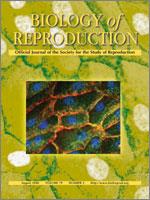Recently, we demonstrated that pyruvate dehydrogenase A2 (PDHA2) is tyrosine phosphorylated in capacitated hamster spermatozoa. In this report, using bromopyruvate (BP), an inhibitor of PDHA, we demonstrated that hamster sperm hyperactivation was blocked regardless of whether PDHA was inhibited prior to or after the onset of hyperactivation, but the acrosome reaction was blocked only if PDHA was inhibited prior to the onset of the acrosome reaction. Further, inhibition of PDHA activity did not inhibit capacitation-associated protein tyrosine phosphorylation observed in hamster spermatozoa. It is demonstrated that the essentiality of PDHA for sperm capacitation is probably dependent on its ability to generate effectors of capacitation such as reactive oxygen species (ROS) and cAMP, which are significantly decreased in the presence of BP. MICA (5-methoxyindole-2-carboxylic acid, a specific inhibitor of dihydrolipoamide dehydrogenase [DLD]), another component of the pyruvate dehydrogenase complex (PDHc), also signficantly inhibited ROS generation and cAMP levels thus implying that these enzymes of the PDHc are required for ROS and cAMP generation. Furthermore, dibutryl cyclic adenosine monophosphate could significantly reverse the inhibition of hyperactivation observed in the presence of BP and inhibition of acrosome reaction observed in the presence of BP or MICA. The calcium ionophore, A23187, could also significantly reverse the inhibitory effect of BP and MICA on sperm acrosome reaction. These results establish that PDHA is required for hamster sperm hyperactivation and acrosome reaction, and DLD is required for hamster acrosome reaction. This study also provides evidence that ROS, cAMP, and calcium are involved downstream to PDHA.
How to translate text using browser tools
1 August 2008
Hamster Sperm Capacitation: Role of Pyruvate Dehydrogenase A and Dihydrolipoamide Dehydrogenase
Vivek Kumar,
Venkatesh Kota,
S. Shivaji
ACCESS THE FULL ARTICLE

Biology of Reproduction
Vol. 79 • No. 2
August 2008
Vol. 79 • No. 2
August 2008
acrosome reaction
DLD
hyperactivation
PdhA
protein tyrosine phosphorylation
reactive oxygen species
sperm capacitation




